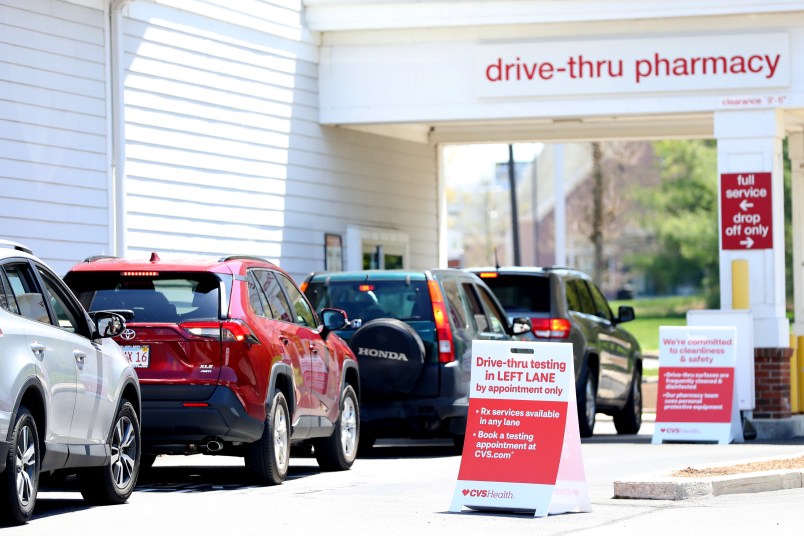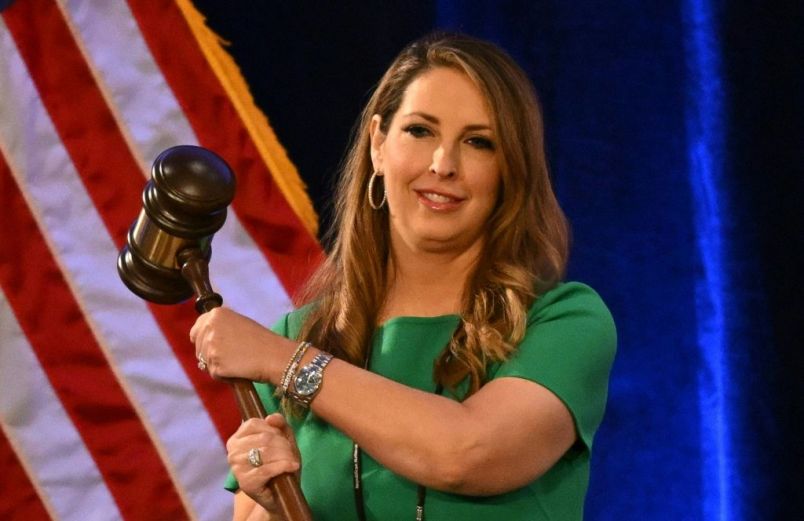For eight drive-through testing sites around the United States, today is the last day of federal support.
The Trump Administration has downplayed the importance of the sites, whose lapse in funding TPM first reported last week, calling them “antiquated” and “inefficient.”
But, late Tuesday afternoon, as the end-of-month expiration date drew near, HHS Assistant Secretary Brett Giroir abruptly announced that the Trump administration will keep supporting 600 separate testing sites at pharmacies around the country, which the administration has highlighted as its preferred alternative to the eight federally funded sites.
Giroir announced that the Trump administration would extend the partnership through August, in part because of spiking numbers of coronavirus cases in states around the country.
Despite the administration’s touting of the pharmacy collaboration, experts told TPM that the program is responsible for a laughably small number of testing sites, and that it barely compares with local, state-level, and corporate attempts to ramp up capacity independent of support from the Department of Health and Human Services.
The scale of testing needed to adequately surveil COVID-19 in the United States is vast.
Dr. Ashish Jha, director of Harvard’s Global Health Institute, has estimated that the U.S. should be doing more than 900,000 tests per day. Paul Romer, a Nobel Prize-winning economist, has argued that the U.S. should test every resident every two weeks until the virus passes.
Currently, the country is performing around 500,000 tests per day. Giroir said that the pharmacy testing program the Trump administration is extending at the last minute has delivered 750,000 tests since March.
That number comes as questions persist over the Trump administration’s role — or lack thereof — in promoting testing for COVID-19.
HHS has focused in part on what are called community-based testing sites created, as the Trump administration put it in a May testing strategy report to Congress, “to ensure that specimens could be collected without overburdening the traditional health care system.”
Since March, HHS has created dozens of drive-through testing sites in the program. Out of 41, only 13 remain, 8 of which will lose federal support at the end of this month, as TPM first reported last week.
HHS claimed in response that the drive-through sites which lose support on Wednesday don’t constitute the administration’s current, primary effort, and are part of an “antiquated,” “1.0” stage of the response.
Rather, HHS officials claimed, the Trump administration has set up community-based “2.0” testing sites at 600 pharmacies around the country.
“The federal government is not ending funding or support for COVID-19 testing sites,” Giroir said last week.
But the funding and support which remains in place is very limited. Out of 67,000 pharmacies in the U.S., HHS is extending direct support to 600 of them.
“The Trump Administration will continue to fully support the public health needs of all states as they respond to recent increases in COVID-19 cases and hospitalizations,” Giroir said in a Tuesday statement. “To maintain or increase our COVID-19 testing footprint, especially in areas of high social vulnerability, we are extending this partnership through August 2020.”
Joe Goode, a CVS spokesman, told TPM that the drugstore chain had set up 1,400 testing sites without help from HHS.
Dr. Bob Kocher, a member of California’s coronavirus testing task force and an adjunct professor of medicine at Stanford, told TPM that California had around 750 sample-collection sites for COVID-19 tests.
“600 sites in America does seem like a very small number given the sites that there are to collect samples — certainly every hospital can do it, every urgent care facility can do it,” Kocher said.
The extent of the federal help also falls far short of the 1 million tests per day number that experts say would provide adequate testing for the U.S. population. HHS told TPM that as of June 25, its community-based testing program had performed a total of 1,021,161 tests since the program’s inception in March.
Another issue with the supposed crux of the administration’s testing framework is murkiness around its financial backing.
The government has no intention of funding the sites indefinitely, HHS told TPM. Rather, the Trump administration is intent on shifting costs for the public health measure back onto people’s insurance plans.
Tuesday’s extension, as well, is temporary, and will only go until August. HHS issued the extension on June 30, the day funding was initially set to expire.
But it’s not clear how tightly-knit that insurance backup safety net will be. Experts describe contradictory and vague guidance from the administration that could leave some people falling through the cracks, depending on how their insurance companies interpret the jumble of directives.
Loren Adler, associate director of the USC-Brookings Schaeffer Initiative for Health Policy, told TPM that the government’s current payment guidance for insurance companies is “unclear.”
“Insurance companies were just told in this guidance that they don’t have to cover tests not ordered by a medical professional, which could plausibly include testing along these lines, but it’s unclear,” he said of pharmacy tests. “Making this more unclear to me is that I read the statutory language in FFCRA, as amended by the CARES Act, as pretty clearly requiring insurers to cover such tests without cost-sharing.”
“There are lots of overlapping policies,” Christen Linke Young, a fellow at the USC-Brookings Schaefer Initiative for Health Policy, added to TPM. “It’s entirely unclear from one day to the next what is getting paid for by whom and what is getting delivered by whom.”
Kocher added that while California receives help in the form of emergency funding for testing from FEMA, it’s not clear why the federal government has not been more aggressive in setting up testing.
“I don’t disagree with HHS’s assertion that they’re making a contribution — the question is why aren’t they making a larger contribution,” he told TPM.






